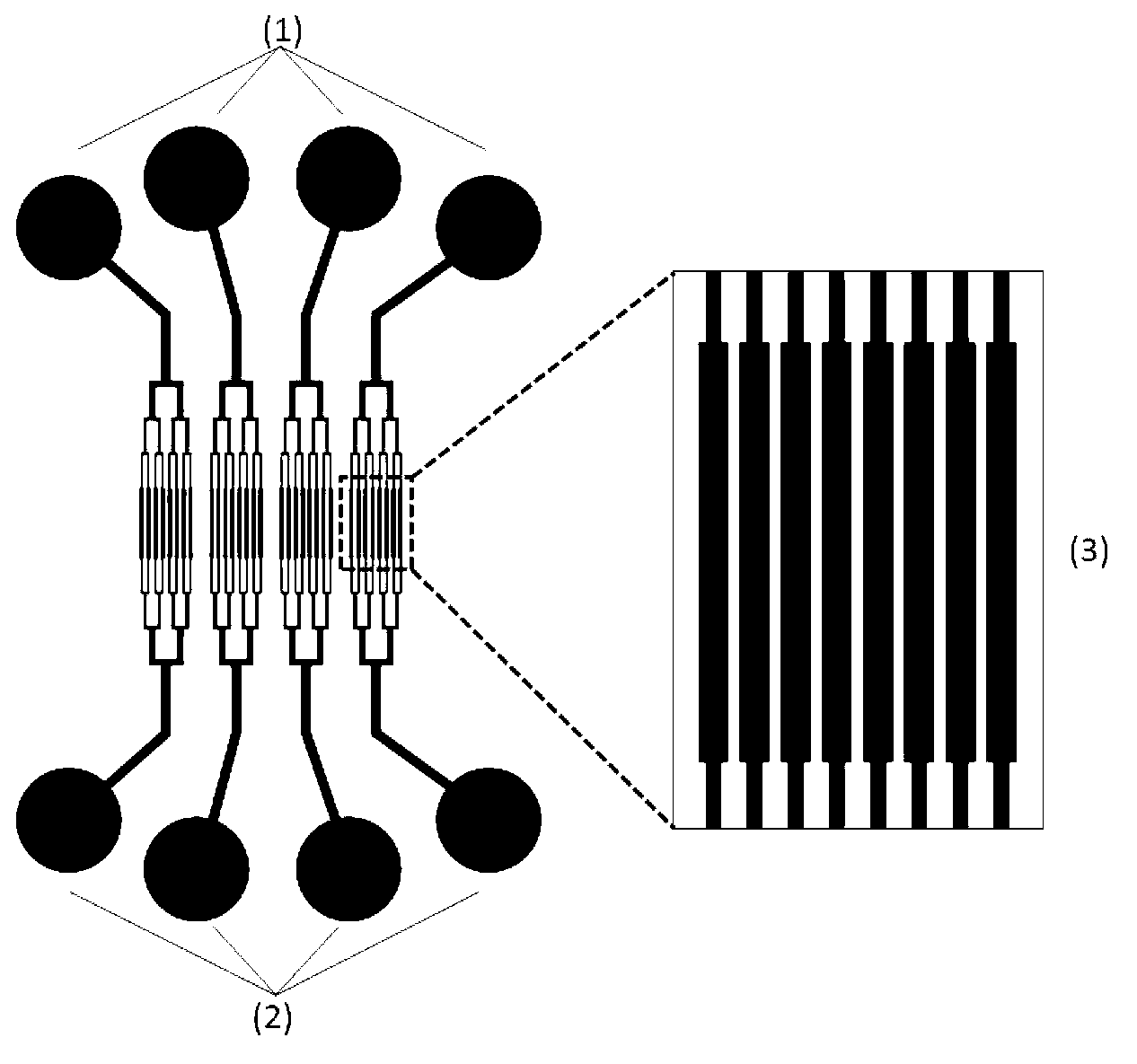Establishment method of diabetic vasculopathy model based on microfluidic chip
A technology of microfluidic chips and blood vessels for diabetes, which is applied in the measurement/testing of microorganisms, biochemical equipment and methods, artificial cell constructs, etc., and can solve the problem of monocytes being in a blank stage.
- Summary
- Abstract
- Description
- Claims
- Application Information
AI Technical Summary
Problems solved by technology
Method used
Image
Examples
Embodiment 1
[0029] Establishment of Diabetic Vascular Lesion Model Using HUVEC Cells
[0030] Using the microfluidic chip designed and manufactured by the laboratory, the structure is as follows: figure 1 shown. Prepare a type I mouse tail collagen working solution with a concentration of 100 μg / mL, inject it into the chip through the cell inlet pool, let it stand at room temperature overnight, remove the collagen working solution after 24 hours, and wash the channel 3 times with the cell culture solution. After digesting HUVEC cells, dilute to a concentration of 5×10 6 cells / mL cell suspension, add 100 μL HUVEC cell suspension to the chip through the cell inlet pool, under the modification of collagen, the cells quickly adhere to the wall and spread evenly on the bottom of the cell culture chamber, when the cells are observed under an optical microscope When evenly distributed in the cell culture chamber, immediately move the chips into the CO2 incubator to continue culturing. After t...
Embodiment 2
[0032]Characterization of corresponding structural and functional proteins in cells and surfaces of diabetic vascular disease model
[0033] Using the microfluidic chip designed and manufactured by the laboratory, the structure is as follows: figure 1 shown. After chip modification, the same cell inoculation and culture methods as in Example 1 were used to establish a diabetic vascular disease model. After stimulation for 48 hours, immunofluorescence staining was performed on the cells, and the monitored proteins were carbon monoxide synthase (eNOS), von Willebrand factor (vWF), integrin β4 (Intβ4), vinculin, and endothelial cell adhesion molecule- 1 (VCAM-1) and intercellular adhesion molecule-1 (ICAM-1). The method is as follows: cells were fixed with 4% paraformaldehyde, washed three times with PBS buffer, 10 min each time; treated with 0.1% triton X-100 porogen for 10 min, washed three times with PBS buffer, 10 min each time; blocked with goat serum for 1 h, Primary ant...
Embodiment 3
[0035] Adhesion and rolling of monocytes on the surface of endothelial cells under different fluid shear forces
[0036] Using the microfluidic chip designed and manufactured by the laboratory, the structure is as follows: figure 1 shown. After chip modification, the same cell inoculation and culture methods as in Example 1 were used to establish a diabetic vascular disease model. Then the leukemia mononuclear cells cultured to a certain density were diluted into a certain density of cell suspension, the concentration was 1×10 6 cells / mL, through the cell inlet pool at a certain flow rate into the channel stimulated by the culture solution containing different glucose concentrations, the microscope continuously photographed the adhesion and rolling phenomenon of monocytes on the surface of HUVEC cells, and counted the occurrence of adhesion and rolling The number of monocytes was analyzed by Image ProPlus software to analyze the speed and track of monocyte movement, and the ...
PUM
 Login to View More
Login to View More Abstract
Description
Claims
Application Information
 Login to View More
Login to View More - R&D
- Intellectual Property
- Life Sciences
- Materials
- Tech Scout
- Unparalleled Data Quality
- Higher Quality Content
- 60% Fewer Hallucinations
Browse by: Latest US Patents, China's latest patents, Technical Efficacy Thesaurus, Application Domain, Technology Topic, Popular Technical Reports.
© 2025 PatSnap. All rights reserved.Legal|Privacy policy|Modern Slavery Act Transparency Statement|Sitemap|About US| Contact US: help@patsnap.com



